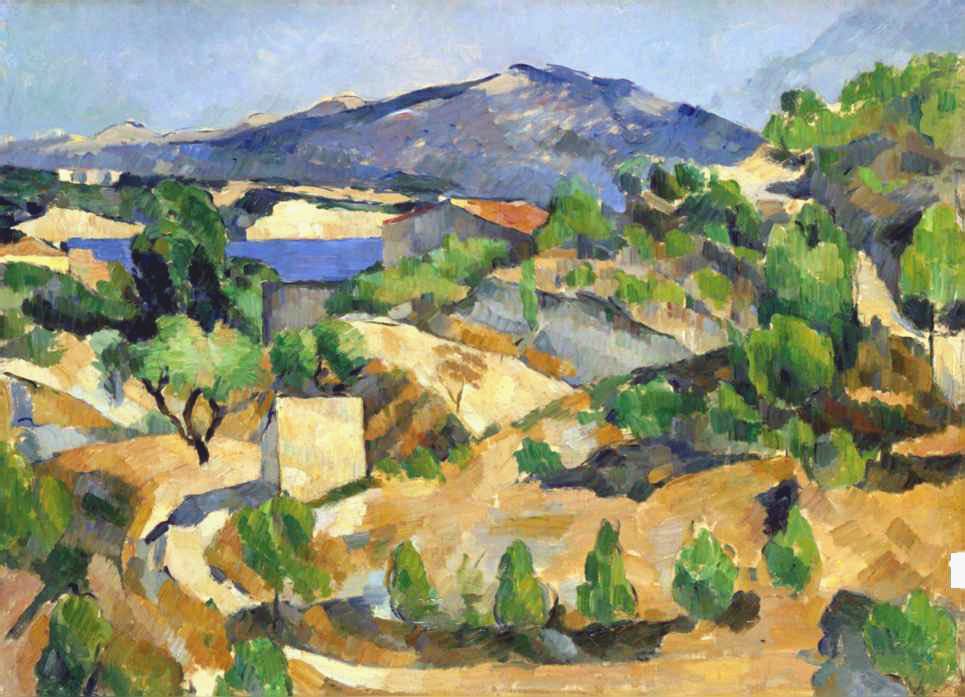
True lovers of Paul Cézanne will enjoy the current exhibition of his portraits at the Musée d’Orsay in Paris, but they should by no means miss “Le Chant de la Terre,” the superb summer show at the Fondation Pierre Gianadda in Martigny, Switzerland, studded with masterpieces by this unclassifiable artist who stands alone in the annals of art history and who, “like Mahler” in the world of music, noted the exhibition’s curator, Daniel Marchesseau, opened the way to modernity for those who followed.
Over 80 paintings are included in the exhibition, including what is probably the last landscape he ever painted, “Le Cabanon de Jourdan” (1906), a masterly finished (unlike many of the late works) piece with shades of blue that could break your heart.
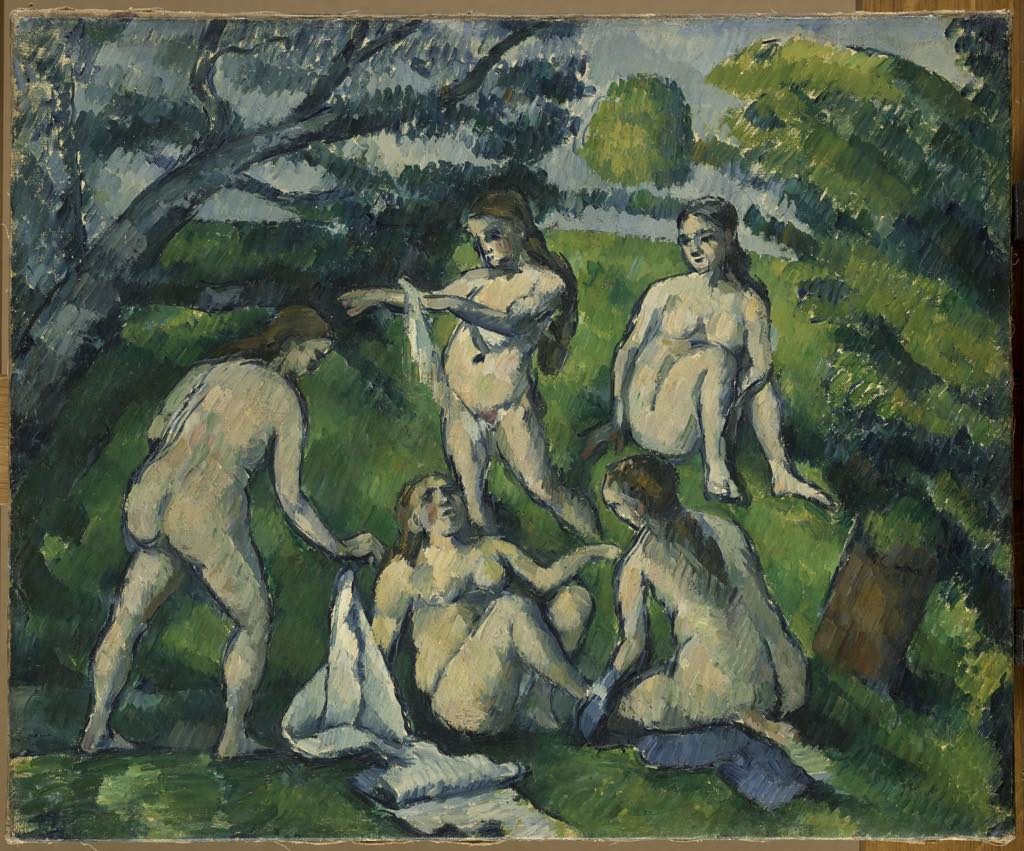
While the show includes mainly landscapes (40), there are also early works, some portraits, a number of paintings of bathers (Picasso, who bought the painting pictured above in 1957, had taken inspiration from Cézanne’s bathers for “Les Demoiselles d’Avignon”) and many stunning still lifes.
There are also some curiosities, like Cézanne’s first two paintings, which have never been exhibited before, including one of the panels the artist’s father commissioned him to paint for the family home when he was in his 20s, most of which were eventually cut up and sold.
It is the landscapes, however, that nearly jump off the red-painted walls when you walk into the Fondation Gianadda’s strange cubic building and glimpse the exhibition, hung in the open lower floor, from above.

Up close, they are just as powerful. The star of the show is probably “Montagnes en Provence (Le Barrage de François Zola)” (c. 1879; pictured at top of page), but then there is “La Montagne Sainte-Victoire vue des Lauves” (1902-06), a late work that breaks up the surface in a way that makes clear the connection with the Cubism to come as Picasso and Braque took a lesson from their master and ran with it, as does the green-on-intense-green “Le Pont de l’île Machefer à Saint-Maur-des-Fossés” (1895-98).
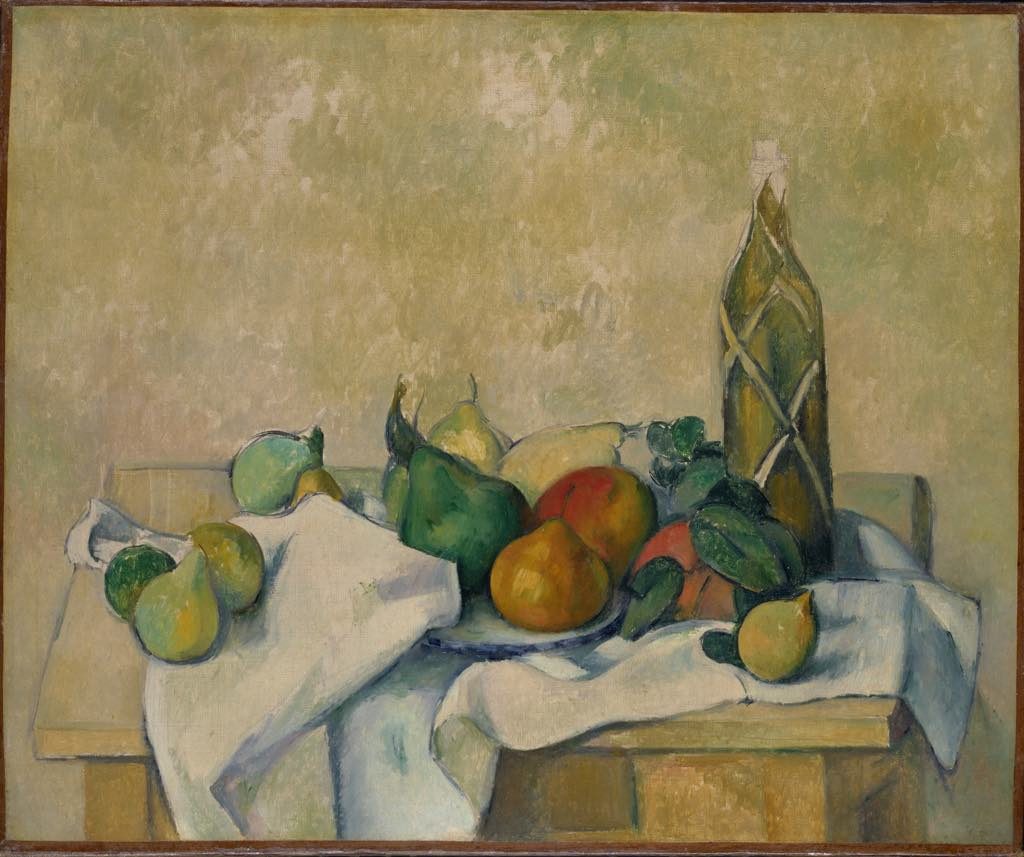
There are some killer still lifes here as well. Just one of many examples: “Verres et Pommes” (1879-80), from a private collection. On seeing it and the others you will surely agree with Woody Allen’s character Isaac Hayes in Manhattan, if you don’t already, that the “incredible apples and pears by Cézanne” are one of things that makes life worth living.
A trip to Martigny to see this exhibition is worth it. While the town itself is uninteresting, it has a beautiful, mountain-surrounded setting, and the Fondation Pierre Gianadda offers a wealth of attractions.
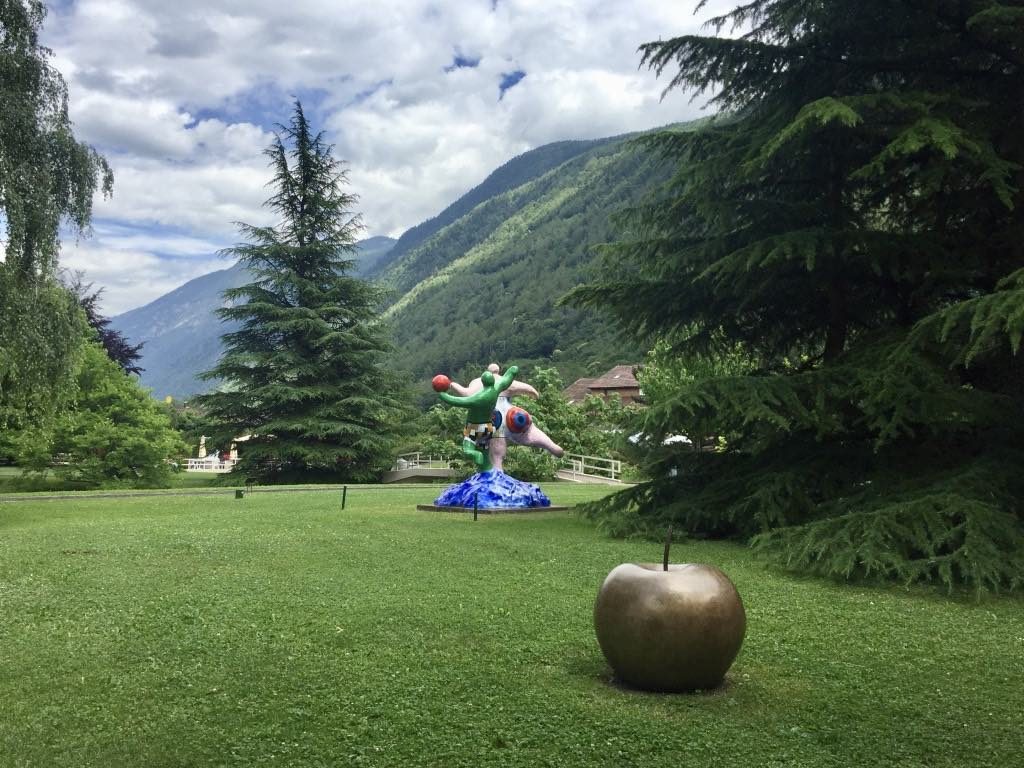
The peaceful sculpture park (with little signs informing visitors that they are allowed to walk on the grass) is dotted with works by great modern artists including Eduardo Chillida, Germaine Richier, Alexander Calder, Antoni Tàpies, Willem de Kooning, Henry Moore, Niki de Saint Phalle, Jean Dubuffet and more.
The park is also home to the ruins of a Roman temple (discovered when the foundation was being built) and a wonderful outdoor exhibition of black-and-white photos by founder Léonard Gianadda, an accomplished photographer.
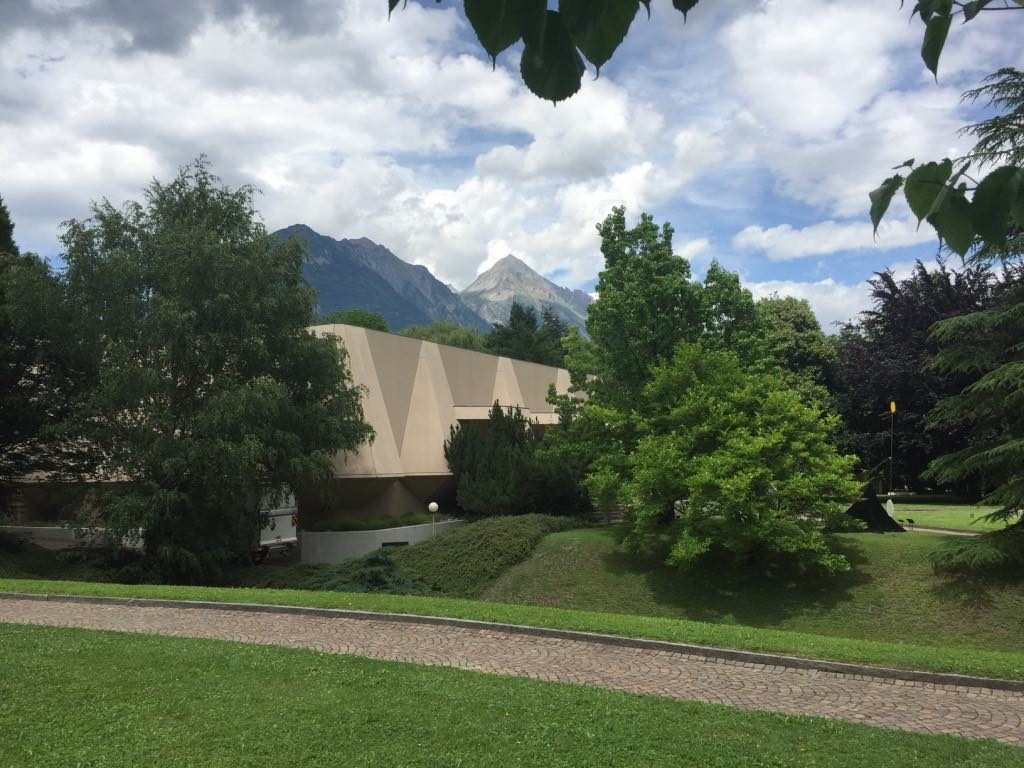
Inside, the foundation also offers an archaeological museum, a show of photos of artists by Henri Cartier-Bresson and an automobile museum stuffed full of rare early vehicles. Each summer, the foundation also hosts an annual series of concerts featuring, this year, such high-caliber performers as Cecilia Bartoli, Jordi Savall and Murray Perahia.
Favorite
Great place, but I haven’t been there for years. Seldom get out of Paris these days since I’m now a geezer of 91.
How do you get there from Paris? Is it easy or do you have to change trains, then taxi to the Fondation?
Will this show travel to other cities/countries?
No, the exhibition will not be traveling. You can take a train from Paris to Martigny, Switzerland with one change. Check the times and fare on https://www.voyages-sncf.com
Will this show travel to other venues?
How can I get to the Fondation from Paris?
Wonderful review
Oh would I love to see this exhibit!